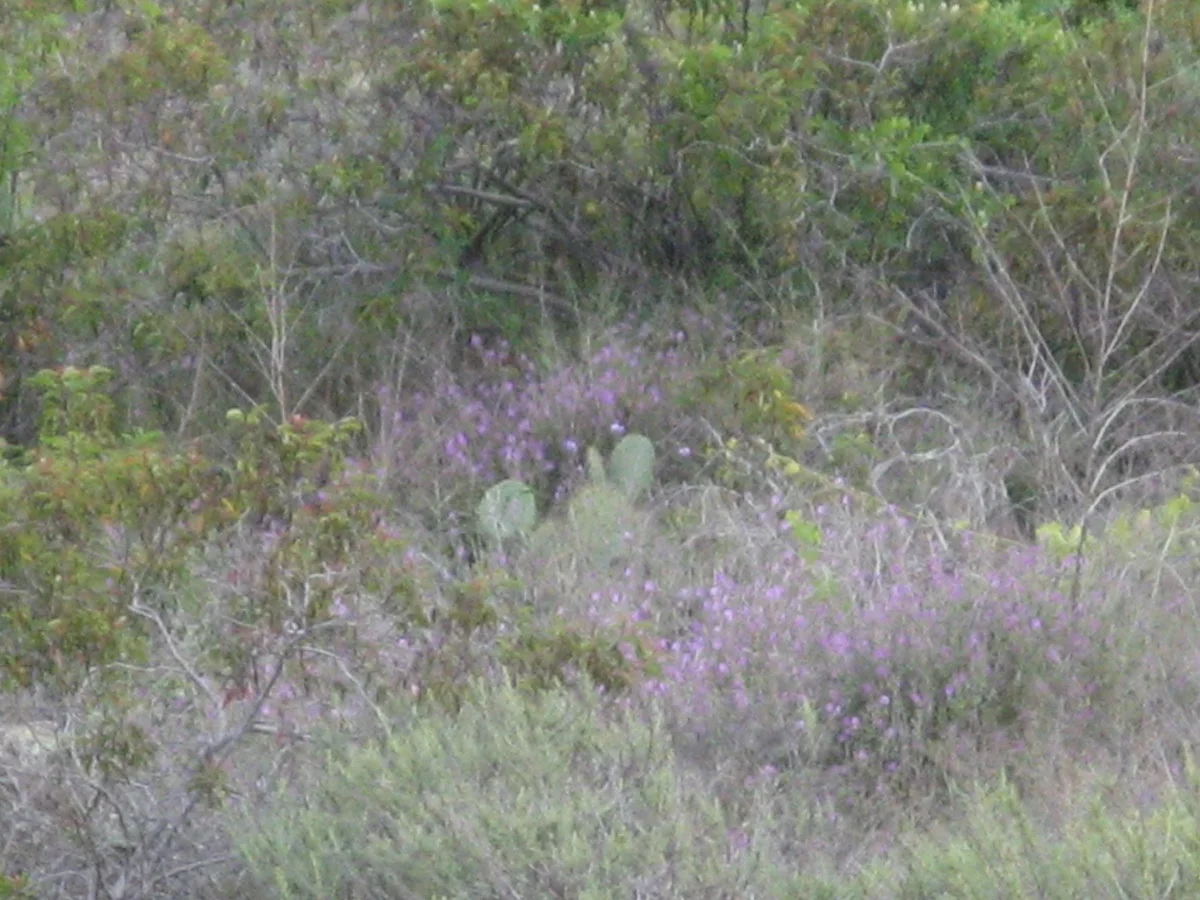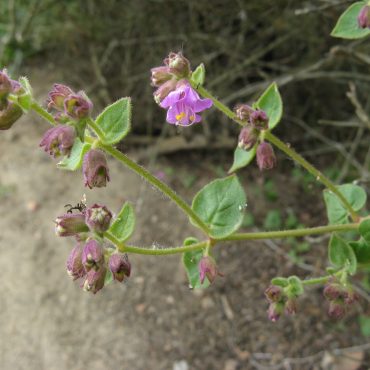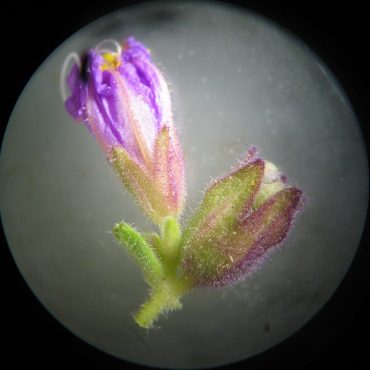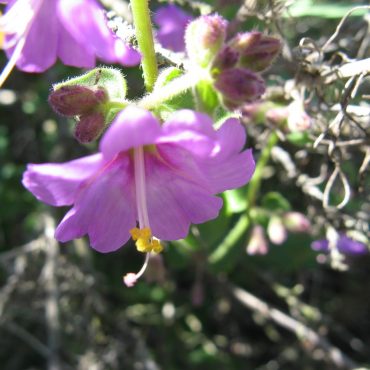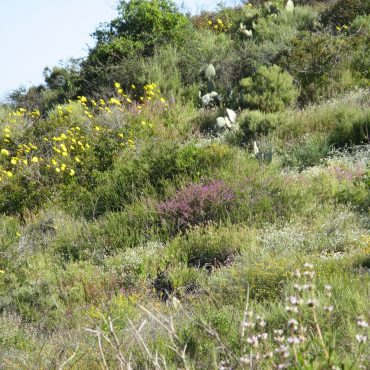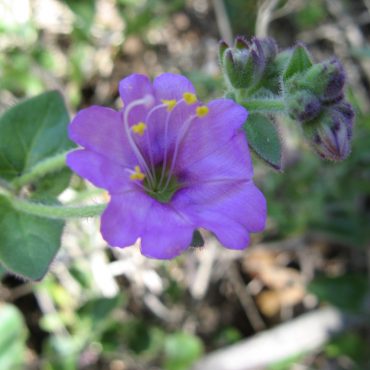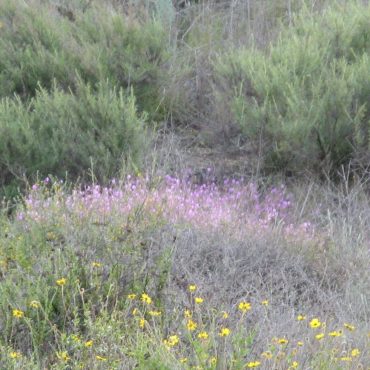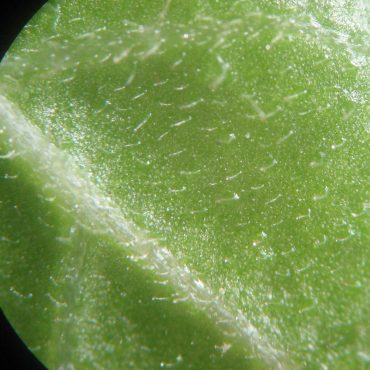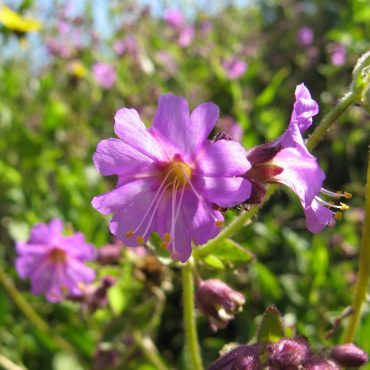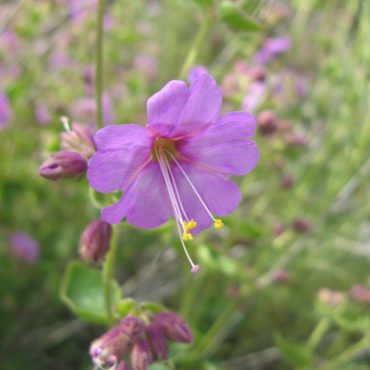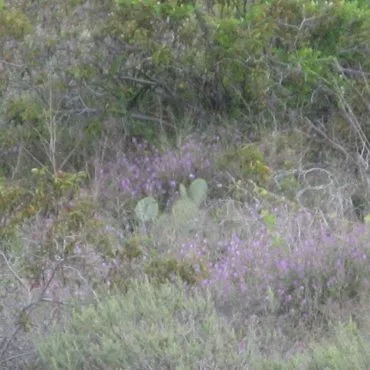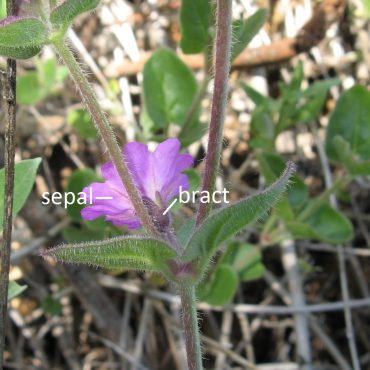Wishbone Bush is a small, sometimes vine-like, perennial that is usually less than three feet (1 m) high and somewhat woody at the base. Stems are numerous, brittle and repeatedly branched. At each juncture, the main stem bends to one side and the lateral branch mirrors that angle on the other side, forming “V”s along the stem like a series of wishbones. Leaves are opposite, rounded to cordate, with smooth margins, usually one inch (2.5 cm) or less in length. Leaves and stems are covered with glandular hairs which make them soft and somewhat sticky to touch.
Wishbone bush blooms primarily at night; flowers open mid to late afternoon and close again the following morning. One to several flowers appear in clusters at the ends of lateral branches, usually opening one at a time. What appears to be a normal flower actually lacks petals. The bright magenta “petals” are actually colored sepals while the base of a flower, the involucre, consists of five bracts that look like sepals. Bracts are fused at the base, with five green lobes that are edged with purple. The flowers are radial, 1/2-1 inch (1.2-2.2 cm) across. In the Reserve, the five petal-like sepals are bright pink to magenta, but pale pink and white forms occur elsewhere. Sepals are fused at the base, expanding into five lobes that are themselves bi-lobed at the ends. The throat of the flower is green, surrounded by a dark magenta band. There are five stamens with slim, pale filaments that extend beyond the sepals; anthers are bright yellow. The pistil has a one-chambered, superior ovary that is surrounded by the tissue of the flower base; the style extends beyond the anthers and bears a hemispherical purple stigma. Wishbone bush blooms between Dec. and June,1 although the peak bloom in the Reserve is usually March and April.
The fruit is a one-seeded, spherical, dry capsule partially enclosed in the tube of the fused bracts and the hardened base of the flower (a”diclesium” or “anthocarp”). The old sepals collapse on top of the ovary and persist on the developing fruit like a little beanie. The fruit is mottled green when young, aging to dull, dark brown which is sometimes marked with pale stripes.

